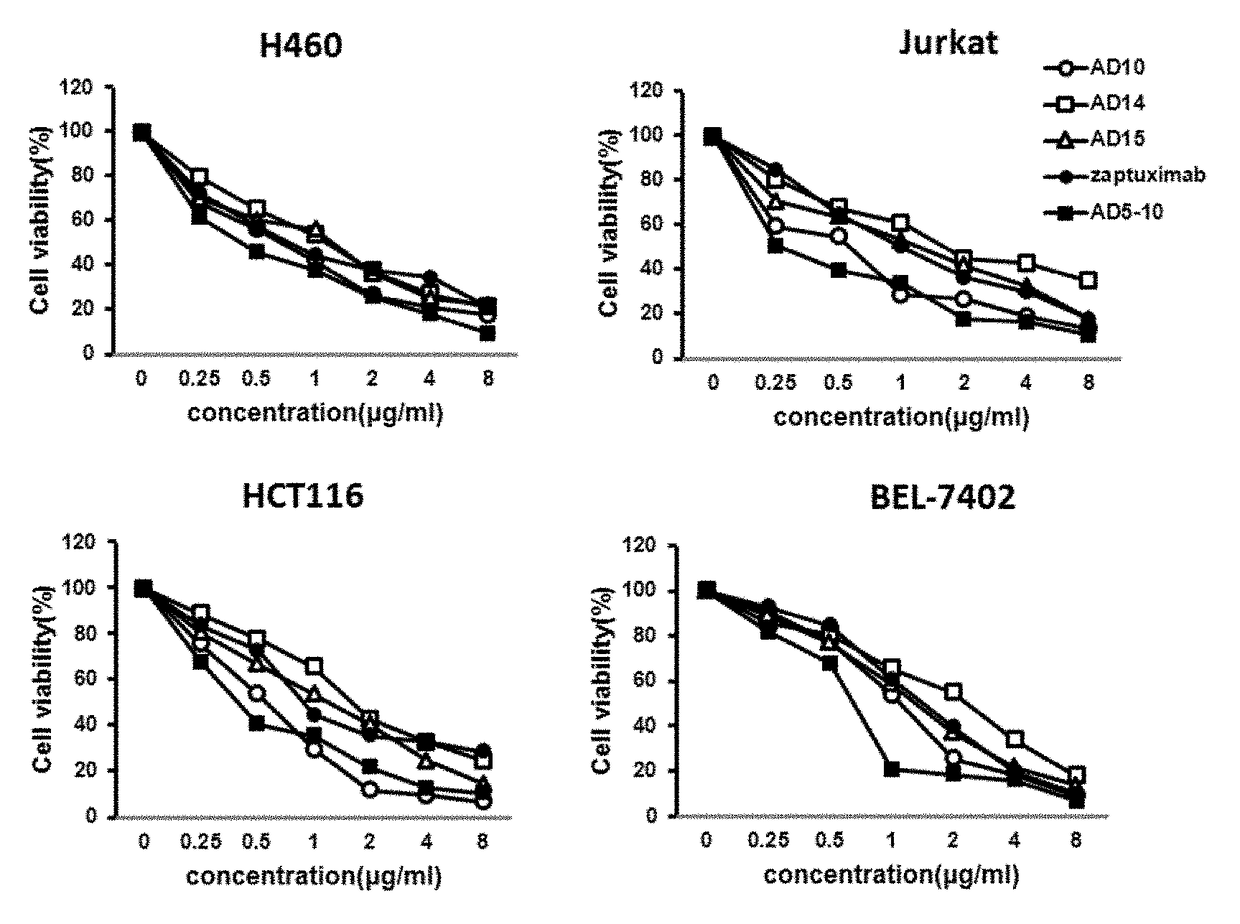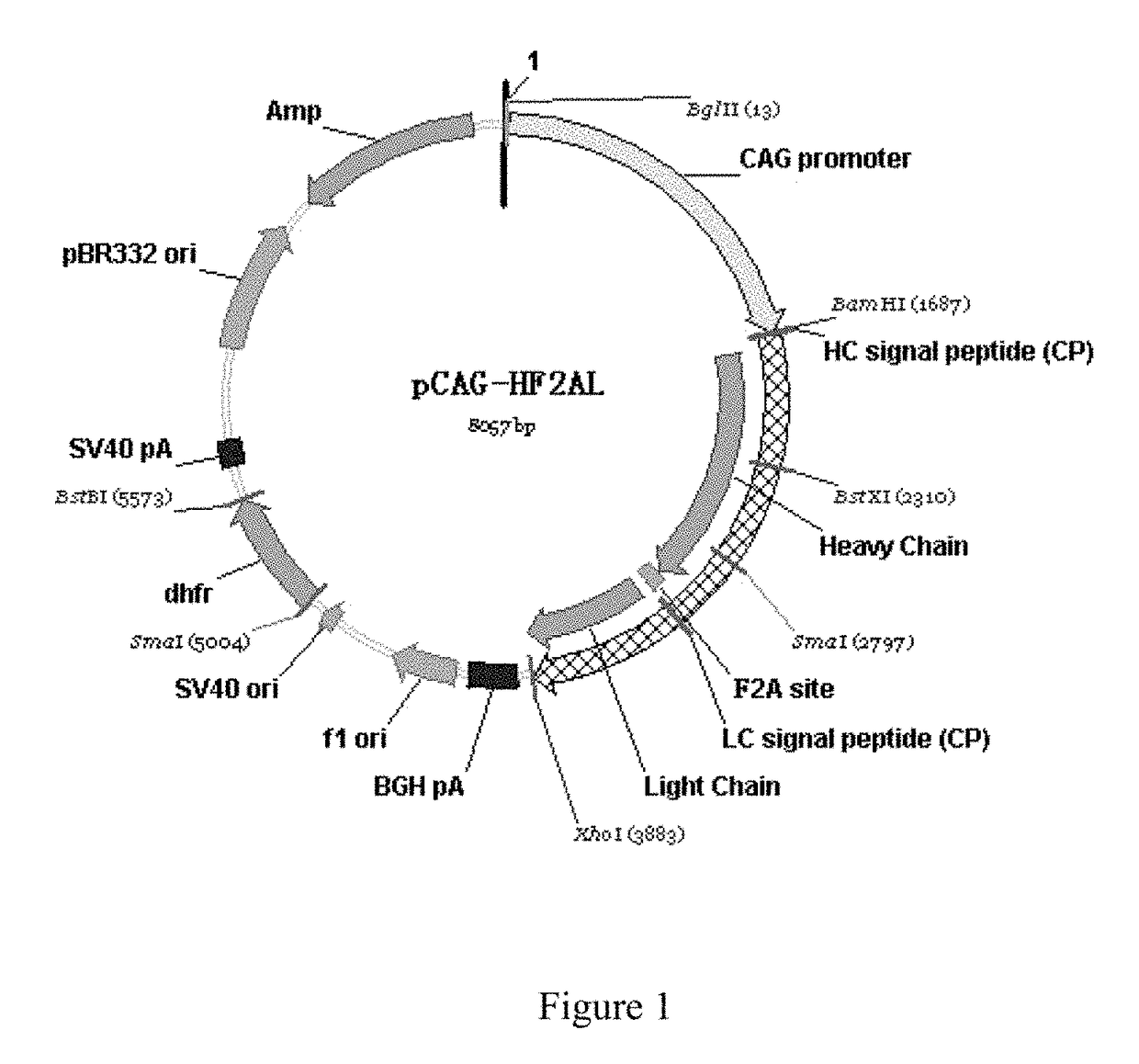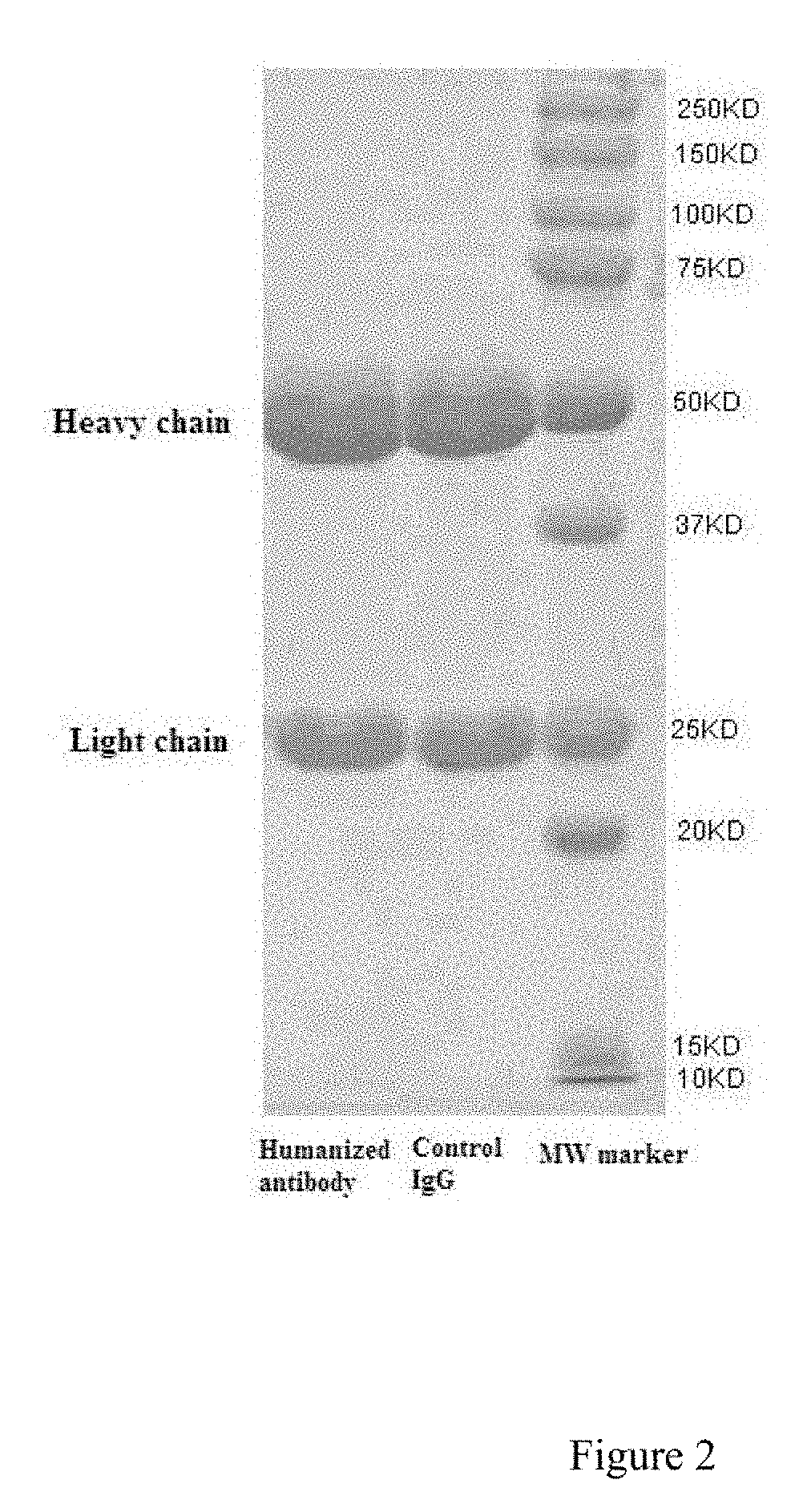Humanized monoclonal antibodies against the extracellular domain of human death receptor 5
a human death receptor and human antibody technology, applied in the field of humanized monoclonal antibodies against the extracellular domain of human death receptor 5, can solve the problems of human organ damage and effect, and achieve the effects of strong inhibition of formation and growth, no toxic side effects on normal cells, and enhanced anti-cancer
- Summary
- Abstract
- Description
- Claims
- Application Information
AI Technical Summary
Benefits of technology
Problems solved by technology
Method used
Image
Examples
example 1
Design of Humanized Monoclonal Antibody, and Construction and Results of Eukaryotic Expression Vector, which Efficiently Expresses Humanized Anti-DR5 Monoclonal Antibody
[0071]The CDR fragments of heavy chain and light chain variable regions of murine AD5-10 monoclonal antibody (Chinese patent application No. 200410070093.1) were identified and labeled using Kabat numbering system (such as, for example, as described online at www.bioinf. org.uk). The canonical structural prediction for CDR fragments of heavy chain and light chain variable regions was performed according to reference documents (1, Williams D. G. et al. Humanising Antibodies by CDR Grafting in Antibody Engineering (2010) Vol. 1, p319-339, Editors: Kontermann R. and Dubel S., Springer-Verlag Berlin Heidelberg. 2, Hwang WY, Almagro JC et al., (2005) Methods, 36: 35-42), human antibody sequences which share the same canonical structure were chosen as recipient framework.
[0072]Design of humanized antibody heavy chain: the ...
example 2
Expression and Purification of Humanized Anti-DR5 Monoclonal Antibody
[0078]The constructed eukaryotic expression vector pcDNA3-CAG-HF2AL-dhfr was transfected into HEK293 cells (purchased from ATCC, CRL-9096) by liposome transfection. The cells were incubated at 37° C., 5% CO2, with shaking at 120 rpm / min; the humanized anti-DR5 monoclonal antibody was expressed by HEK293 eukaryotic cells and secreted into cell culture medium. Cell culture supernatant was collected when the viability of transfected cells reached less than 60% (about 6 days). One ml of protein A affinity chromatography column was prepared, firstly balanced with PBS phosphate buffer (20 mM phosphate, 300 mM sodium chloride, pH7.0), and then loaded with collected cell culture supernatant, washed with PBS phosphate buffer, and eluted with 100 mM citric acid (pH 3.0). The collected eluent was immediately adjusted with 1.0 M Tris-HCl (pH 9.0) to pH 8.0, and then dialyzed against PBS buffer overnight. The purity and molecul...
example 3
Affinity Assay of Humanized Anti-DR5 Monoclonal Antibody Binding to its Antigen DR5
[0079]On CM5 chip (GE Healthcare, BR-1000-14) used by Biacore X100 system (GE Healthcare, Uppsala, Sweden), blank control channel and sample channels were selected. Firstly, a mixture of 50 mM N-hydroxysuccinimide (NHS) and 200 mM carbodiimide [1-ethyl-3-3-dimethyl aminopropyl carbodiimide, EDC] at a ratio of 1:1 was injected into blank control channel and sample channels at a speed of 10 μl / min for 7 minutes to activate the chip. The antigen DR5 (45 μg / ml) dissolved in sodium acetate solution, pH 5.5, was injected at a speed of 5 μl / min to coat the chip, until signal with target value 680 Ru was achieved. 1.0 M ethanolamine was injected at a speed of 10 μl / min for 7 minutes, to block the excess binding sites on the chip. The binding kinetics assay was performed by using HBS-EP buffer (0.01 M HEPES, pH 7.4, 0.15 M NaCl, 3 mM EDTA, 0.005% Surfactant P20), the purified humanized monoclonal antibodies AD...
PUM
| Property | Measurement | Unit |
|---|---|---|
| pH | aaaaa | aaaaa |
| pH | aaaaa | aaaaa |
| pH | aaaaa | aaaaa |
Abstract
Description
Claims
Application Information
 Login to View More
Login to View More - R&D
- Intellectual Property
- Life Sciences
- Materials
- Tech Scout
- Unparalleled Data Quality
- Higher Quality Content
- 60% Fewer Hallucinations
Browse by: Latest US Patents, China's latest patents, Technical Efficacy Thesaurus, Application Domain, Technology Topic, Popular Technical Reports.
© 2025 PatSnap. All rights reserved.Legal|Privacy policy|Modern Slavery Act Transparency Statement|Sitemap|About US| Contact US: help@patsnap.com



